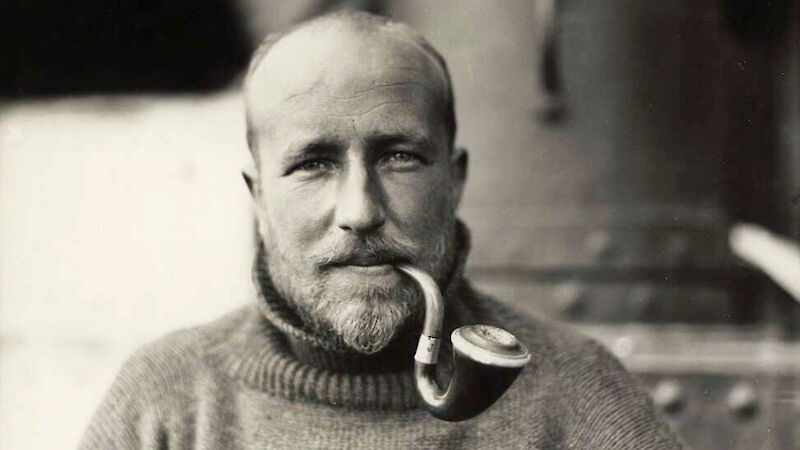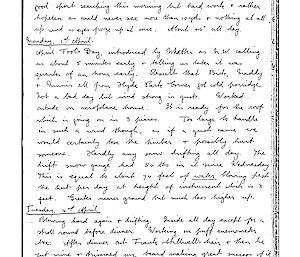“If we do nothing else we will at least go back with the world’s record for heavy winds,” observed Edward Frederick Robert ‘Bob’ Bage in his diary entry of Sunday 17th March 1912. History has shown that the Australasian Antarctic Expedition (AAE) of 1911–14, to which Bage was referring, achieved much more than wind world records, but at the time of writing, Bage would have had no inkling as to how the rest of his adventure in Antarctica would transpire.
It is that raw, in-the-moment, lived experience of the expedition, as it unfolded, that makes Bage’s neatly handwritten diary, held by the State Library of Victoria, such a fascinating insight into the day-to-day life of what would arguably become Australia’s most famous Antarctic expedition.
Taking leave from the Royal Australian Engineers, 23 year old Bage joined the AAE, led by Douglas Mawson, as Astronomer, Assistant Magnetician and Recorder of Tides. A man of steady character and a natural leader, Bage was popular with his fellow expeditioners. His optimistic outlook and good humour are clearly apparent in his diary entries and letters home to his mother and sisters in Melbourne, in which he describes the work and recreation activities of the expedition.
Of particular amusement are the diary entries that capture the camaraderie amongst the group, as grand occasions such as birthdays, the King’s Day and Midwinter are celebrated with gusto. As are the smaller moments, such as the ever present threat of being officially recognised for a badly cooked meal, “great amusement at dinner when Dr Mac was nominated by Hurley for Honorary membership of the Crook Cook’s Association”.
Tasked with leading the Southern Sledging Party in search of the South Magnetic Pole, the diary entries end as Bage, accompanied by Eric Webb and Frank Hurley, embark on their journey. Bage’s final diary entry encapsulates his feelings about Antarctica: “There is only one thing I can add now & that is that a trip like this is a great thing & an experience that I wouldn’t have missed for anything, even if we were to get no sledging at all. It is quite worth the isolation & “hardships?”
However, Bage’s hardships did not end in the harsh conditions of the Antarctic. After returning to Australia, at the conclusion of the AAE, Bage was further tested in the fiery crucible of Gallipoli.
Bage joined the Australian Imperial Force (AIF) and landed at Gallipoli on 25th April 1915, as a Captain and second in command of the 3rd Field Company of Engineers. Little more than two weeks later he was, incredulously, ordered to mark out a forward trench, in broad daylight, in front of the Turkish trenches near Lone Pine. Under a withering hail of Turkish machine gun and rifle fire, Bage was hit three times and killed.
Antarctic diaries such as Bage’s are found throughout Australia’s national, state, university and government libraries. Increasingly they are being digitised and transcribed by volunteers on platforms such as DigiVol, making the information discoverable and accessible to a new generation of Antarctic enthusiasts.
Find Bob Bage’s diary (MS 14209) at the State Library of Victoria.
Jane Black and Chris Carson


